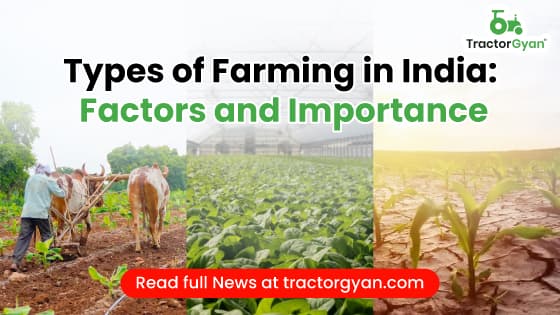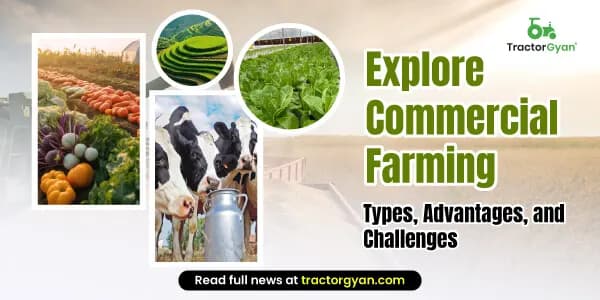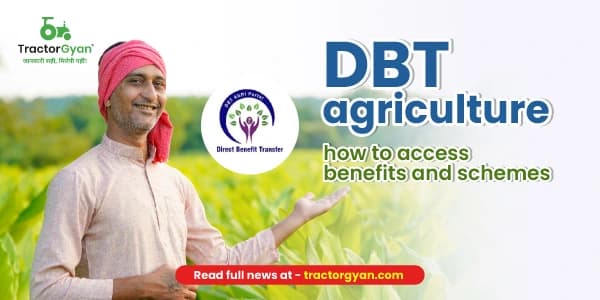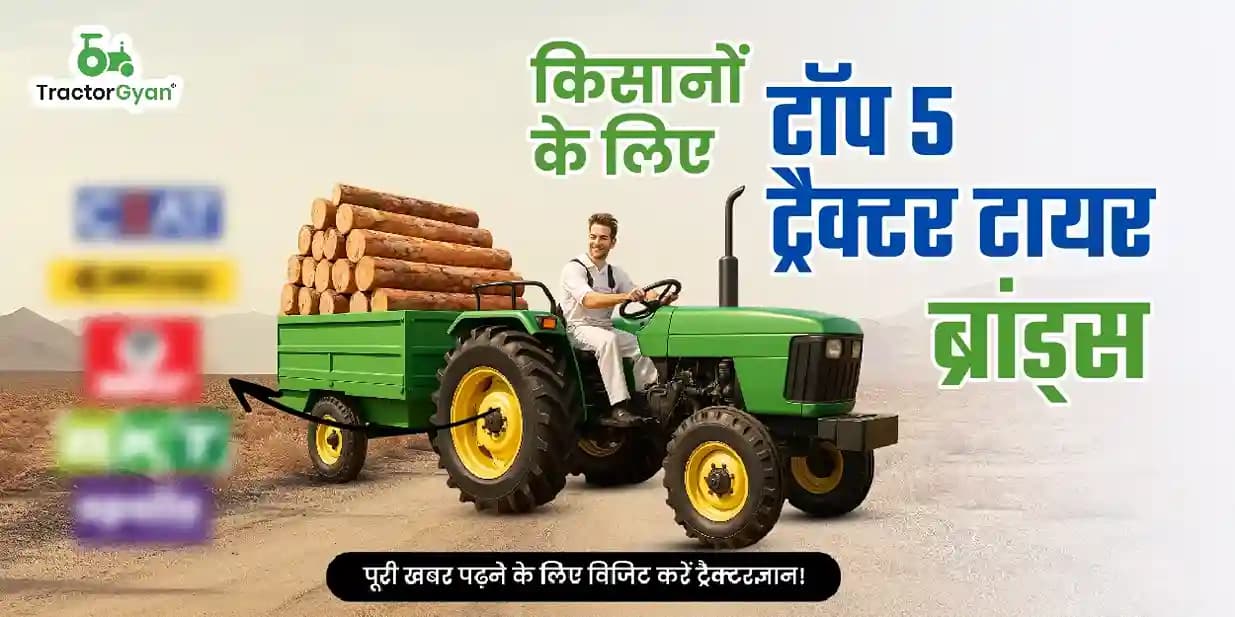13 Types of Farming in India: Factors and Importance
टेबल ऑफ कंटेंट
India is home to one of the world’s most diverse agricultural landscapes, providing livelihoods to nearly two-thirds of its population. With advancements in technology, improved irrigation, and evolving farm practices, Indian agriculture today stands as the second-largest producer globally. From subsistence farming to high-tech agribusiness, the country exhibits a rich variety of farming systems, shaped by climatic conditions, geography, culture, and economic factors.
Let's explore the different types of farming in India, their importance, and how they impact the Indian economy.
Classification of Farming in India
Traditional Farming
Traditional farming in India refers to age-old agricultural practices passed down through generations. These methods rely on natural rainfall, local seeds, manual labour, and minimal use of chemicals or machines.
Key Characteristics:
- Low investment and low output
- Dependency on monsoons
- Organic manure and indigenous knowledge
- Small and scattered land holdings
- Example: Subsistence farming is a classic example of traditional agriculture.
Modern Farming
Modern farming involves the use of advanced technologies, high-yielding variety (HYV) seeds, chemical fertilisers, pesticides, and mechanisation to improve farm productivity.
Key Features:
- Use of tractors, harvesters, and drones
- Irrigation systems like drip and sprinkler
- Precision farming for optimised results
- Example: Intensive farming and commercial farming are part of modern agriculture.
Sustainable Farming
Sustainable farming focuses on producing food without depleting natural resources or harming the environment. It maintains a balance between ecological health and agricultural productivity.
Key Approaches:
- Organic farming
- Crop rotation
- Mixed and ley farming
- Reduced chemical usage
- Goal: Long-term soil fertility, biodiversity, and climate resilience.
Specialised Farming
This includes farming practices that are focused on a single crop or agricultural product, often for commercial or export purposes. Specialized farming requires specific conditions, infrastructure, and knowledge.
Types Include:
- Plantation farming (tea, rubber, coffee)
- Dairy farming
- Horticulture
- Aquaculture
13 Major Types of Farming in India
Here are the 13 major types of farming practised in India:
1. Subsistence Farming

This is the most common form where farmers grow crops primarily for their family's consumption. It involves small landholdings, traditional tools, and minimal use of fertilisers or hybrid seeds.
Common in: Bihar, Odisha, parts of Madhya Pradesh
2. Intensive and Extensive Farming

- Intensive farming: High labour and capital on small land areas, with multiple crops per year. Found in densely populated regions.
- Extensive farming: Low input per hectare, large farms, high mechanisation. Common in less populated or resource-rich states.
Example: Punjab (Intensive), Rajasthan (Extensive)
3. Commercial Farming

Large-scale crop cultivation aimed at the market and export. It uses HYV seeds, machinery, pesticides, and fertilisers.
- Popular crops: Cotton, sugarcane, wheat. Regions: Gujarat, Haryana, Maharashtra
4. Plantation Farming

Cultivation of a single crop over large areas. Requires capital, labour, irrigation, and transport.
- Crops: Tea, coffee, rubber, coconut. States: Kerala, Karnataka, Assam
5. Dryland Farming

Carried out in areas with low rainfall (below 750 mm). Focuses on drought-resistant crops.
- Crops: Jowar, bajra, gram
- Regions: Rajasthan, parts of MP, Telangana
6. Wetland Farming

Practised in areas with abundant rainfall or irrigation facilities.
- Crops: Rice, jute, sugarcane
- Regions: West Bengal, Odisha, Assam
7. Mixed Farming

Mixed farming involves growing crops and raising livestock together. It ensures income even when crops fail.
- Common in: Haryana, Punjab, Karnataka
8. Organic Farming

Organic Farming without synthetic inputs. It uses compost, green manure, and natural pest control methods.
- Popular in: Sikkim (India's first organic state), parts of Uttarakhand
9. Co-operative Farming

Farmers pool their resources like machinery and fertilisers (not land) to reduce costs and improve efficiency.
- Emerging in: Maharashtra, Gujarat
10. Terrace Farming

Used in hilly areas where land is converted into steps to prevent erosion and retain moisture.
- Seen in: Himachal Pradesh, Uttarakhand, North-East India
11. Crop Rotation

Planting different crops sequentially on the same land to maintain soil fertility.
- Example: Wheat, Pulses, Oilseeds, etc.
12. Dairy Farming

Involves rearing cattle for milk. Over 40 million Indian households rely partially on dairy.
- Major states: UP, Punjab, Gujarat
13. Ley Farming

Rotation of pasture grasses and food crops to restore soil fertility in drylands.
- Practised in: Semi-arid parts of Maharashtra, MP
Factors Affecting Farming in India

1. Physical Factors
- Climate: determines crop type and yield
- Soil: Affects fertility and crop choice
- Topography: Influences erosion and farm mechanisation
2. Economic Factors
- Market proximity impacts profits
- Transport availability enables wider distribution
- Capital investment is essential for modern equipment
- Government policies support or regulate crop production
3. Technological Factors
- Use of HYV seeds, biotech, and mechanisation improves yields
- Digital agriculture is reshaping farming with data-driven insights
Steps of Farming for Best Yield

1. Crop Selection
2. Land Preparation
3. Seed Sowing
4. Manuring
5. Irrigation
6. Fertilising
7. Harvesting
8. Threshing
9. Storage
Importance of Farming in the Indian Economy
- GDP Contribution: A backbone of national income
- Employment: Provides work for over 50% of the population
- Food Security: Feeds 1.4+ billion people
- Raw Material Supply: Supports agro-based industries
- Export Revenue: Boosts foreign trade and reserves
Conclusion
Farming in India is much more than just growing crops — it's a livelihood, a tradition, and a cornerstone of the country’s economy. From time-tested traditional methods to cutting-edge innovations, Indian agriculture reflects resilience, diversity, and adaptability. Understanding the different types of farming systems can help farmers, policymakers, and stakeholders make informed decisions for a sustainable future.
कैटेगरी
और ब्लॉग पढ़ें
Commercial farming, a key pillar of modern agriculture, plays a pivotal role in meeting the global demand for food, raw materials, and exports. By focusing on cultivating a single crop over extensive areas, commercial farmers optimize production and contribute to the economy.
In...
The world sure moves faster than we think, but not every advancement is a boon, especially when it comes to farming. Growing crops does not require chemicals or other artificial amenities in some areas of the farming industry. Rather than using chemicals...
Being a Farmer the most important task falls under his role is the health of the soil and crop and to maintain the adequate health and fertility of the soil the most essential aspect which needs to be taken into consideration...
इसके बारे में अपनी टिप्पणी लिखें 13 Types of Farming in India: Factors and Importance
.webp&w=1920&q=75)
ट्रैक्टर और कृषि से जुड़े सबसे अधिक खोजे जाने वाले ब्लॉग्स
18 Dec 2025
18 Dec 2025
29 Jul 2025
08 Sep 2025
03 Jul 2025
30 Jul 2025
30 Jul 2025
30 Jul 2025
29 Jul 2025
30 Jul 2025
29 Sep 2025
31 Jul 2025
18 Dec 2025
31 Jul 2025















.webp&w=2048&q=75)










.webp&w=2048&q=75)
.webp&w=2048&q=75)



























